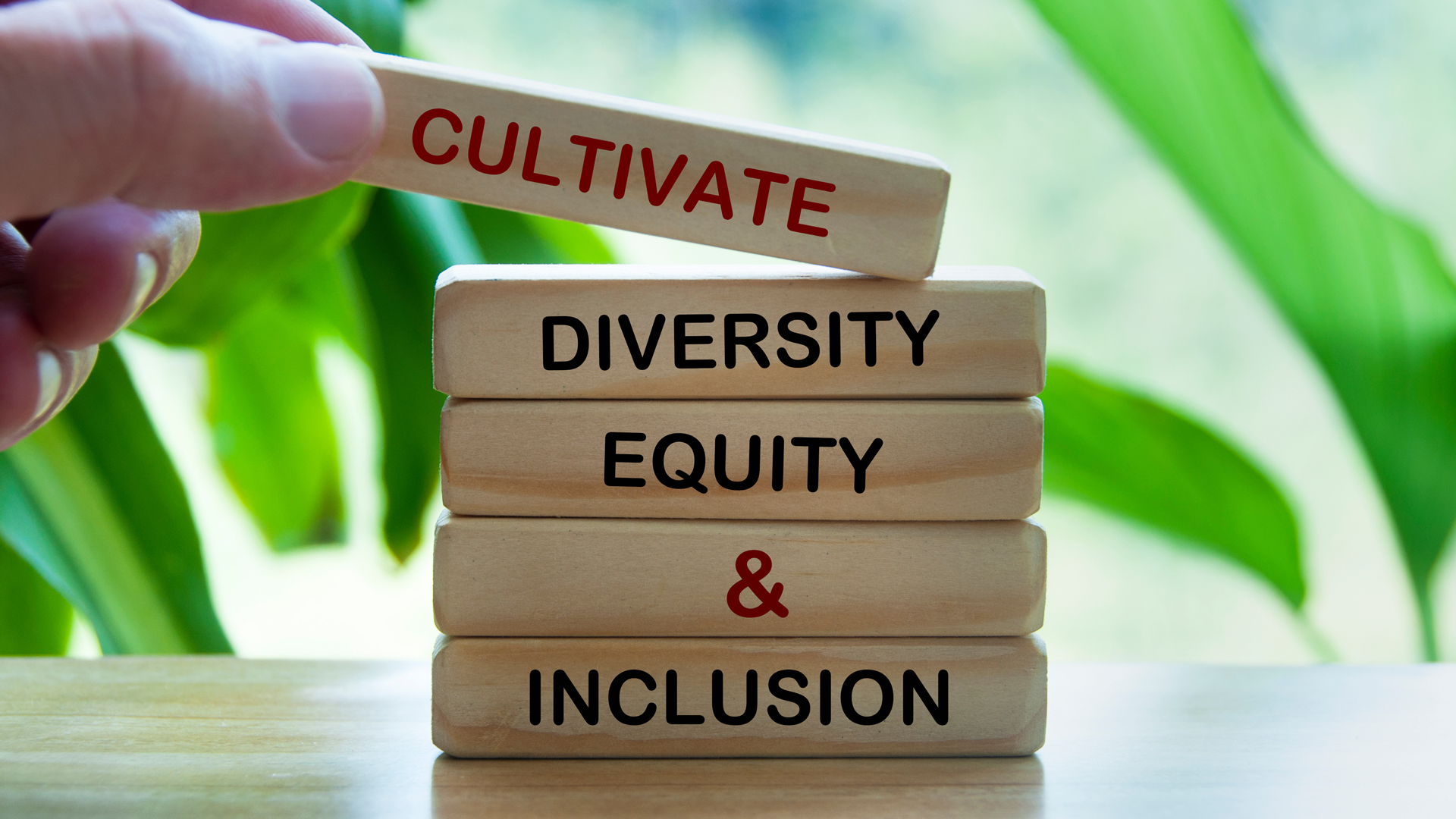Identifying weakness in diversity, inclusion and equality processes isn’t easy. Here Jenny Garrett OBE shows how to cultivate a diverse and inclusive workplace.
Everyone and every organisation have blind spots, things that others can see about them but that they can’t see themselves. When you walk into an organisation and you get a sense that it is fun, formal, or family-oriented, this sense of their culture can show up no matter what is espoused or written on a company website.
When it comes to diversity, equity and inclusion, blind spots can be harder to find. Think about it like a goldfish living happily in its bowl of water, it never considers the idea of water, unless of course it is lifted out of the water and then realises that there is a whole other world incompatible with its survival. As most people are rarely lifted out of the goldfish bowl of their existence, they’re oblivious to a whole world where their behaviours, actions and thought processes can and do disadvantage others.
If you’ve heard or said yourself ‘they’re just not the right fit’, ‘they just don’t come across like a leader’ or ‘we just can’t find any diversity’ in your conversations, or you look at the senior tiers of your organisation and it’s predominantly a group of people similar in age, gender, ethnicity, age and or education bias is likely at play in your organisation.
The challenge is how to identify these blind spots first and secondly and most importantly, make changes. There are three ways in which you can start to identify your diversity blind spots.
Seeking feedback can flag a lack of diversity in your trusted group and provide an opportunity for you to extend your network.
Take an intersectional look at data
Data and reports, such as climate surveys, annual reports, externally commissioned investigations, research, company statements, published targets, retention, performance matrix, and ethnicity pay gap data, can help you understand where your blind spots are. Don’t forget the minorities within the minority, you may be doing well on your gender balance ambitions, but how many of those women are from ethnically diverse backgrounds, have a disability or are from the LGBTQ+ community, and what is their experience?
Receive feedback with humility
Ask trusted colleagues to be honest about what you do well when it comes to helping colleagues feel included, that they belong, and where you can develop. You can be proud of your strengths while working on your development areas. Without feedback, it is impossible to judge if your actions are working for you and others. Seeking feedback can flag a lack of diversity in your trusted group and provide an opportunity for you to extend your network.
Assess your biases
Increase your awareness of biases that you hold, such as affinity bias, and recruiting in your image; prove it again bias, asking those who are minoritised backgrounds to prove themselves over and above what you would ask of their white counterparts and tightrope bias, where only a very narrow set of behaviours are accepted from them and then take actions to overcome them. Tools like the Implicit Association Test or developing your cultural intelligence can help
Once you’ve increased your awareness of diversity blind spots, you can take steps to fix them.
Hire differently
Inclusive recruitment is one of the essential components in which you can challenge the status quo. For example, a common issue is that degree qualifications from particular institutions may not be valued highly, even though they are equal according to the awarding bodies. Challenging this or removing the need for the qualification in the first place can open up a whole new talent pool.
Including inclusion questions in interviews shows its importance and makes it foremost in the minds of your candidates too, you could ask: Tell me about a time when you advocated for diversity and inclusion in the workplace or can you give me an example of how you make your direct reports feel a sense of inclusion, belonging, and equity on a daily basis?
Removing past salary questions from interviews, so as not to reinforce pay gaps that existed in the person’s previous organisation and publishing the salary for the role can create transparency.
Manage differently
Managers are critical in the success of developing and retaining a diverse staff. By creating psychological safety in their teams, their staff will feel that they can speak up with an idea in a meeting, challenge the status quo, share obstacles that they are facing, make a change, or admit a mistake without adverse consequences.
Setting diversity and inclusion as an agenda item in every meeting until it becomes a habitual way of thinking, is a good way of integrating diversity and inclusion into the fabric of organisational thinking. In addition, managers can ask, who is not in the room and what would they say if they were, or who else might need to be consulted for a breadth of perspectives.
Taking an equity lens by taking an individual approach to leading colleagues rather than a blanket set of universal rules that are meant to create fairness but don’t because everyone has a different starting point.
Promote differently
Many people have bought into the meritocracy myth, the idea that through determination and hard work, anyone can achieve anything in their life and career. If there are times when an unlikely candidate secured a role in your organisation, or a role was created for someone, or you’ve seen blatant nepotism, these are all indications that a meritocracy is not in place.
Instead of looking for a cookie-cutter image of leaders you’ve had before, look for difference. What is the value add that diversity brings, and what transferable skills does the person have, even if they don’t have the traditional qualifications and experience? This is not lowering the bar but widening the gate of opportunity and increasing diversity in your organisation.
Diversity is the starting point, but the key to retaining colleagues from diverse backgrounds is creating environments where they feel that they belong, there are no obstacles to their success, they are valued for their difference, and can show up as themselves at work.
Jenny Garrett OBE is an executive coach, leadership trainer and diversity, equity and inclusion expert. Her latest book is Equality vs Equity: Tackling Issues of Race in the Workplace




